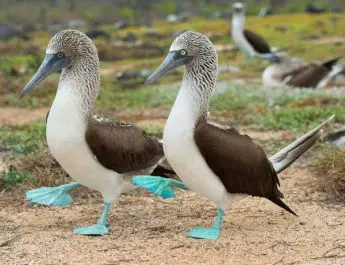Introduction
Quick Navigation
Most people believe strongly that animals contribute to making the world a better place. This concept can be regarded as entirely true as they bring a certain balance to the ecosystem and the environment in general. Each class of animals has the different biological function they play when studied from a broader perspective. Birds, too, are an integral feature of most lands, areas, and continents. They come in different sizes, colors, and ultimately different species.
See also black and white birds
Certain regions in this world have been blessed to have a large population of various bird species, making them perfect areas for birding and other bird-related activities. This is due to the favorable and suitable environment which those regions possess that greatly support the survival of these aviary creatures. Every bird species or family differs from one another in various ways, including physical appearance, plumage, mode of feeding, habitat, and social behavior. The numerous species of birds alive gives the concept of birding a good cause to be globally embraced.
Check also black and yellow birds
Birds are known as flying creatures, but not all of them possess the ability to fly. Some are terrestrial beings like the ostrich, who get around by running, while others are waterbirds that inhabit aquatic habitats. However, some waterbirds can also fly, mostly for migration and in search of food. The different bird species also have different weather and environmental conditions in which they can survive and thrive, and as such, not all of them can survive in every region. This is observed in the case of penguins who can survive in places with extreme cold and icy regions but would live shorter when introduced to an area with a warmer climate. Hundreds of bird species have been named, identified, and observed over the years, and the blue-footed booby belongs to one class.
See this; can birds eat ravens
The blue-footed booby is a widely seen member of the bird family known scientifically as Sulidae.
Booby – a brief description
This unique bird is usually seen in the American state of Arizona and can also be seen in coastal areas and oceans like the Pacific, Atlantic, and Indian oceans. These large tropical birds are seven in number, and they all make up the bird family Sulidae which is categorized in the order of Pelecaniformes. These birds vary in length from about twenty-five to thirty-five inches. They are a well-known bird species that most often stands out as a result of their unique et of webbed feet. Other species of these birds are found predominantly in the Atlantic and Indian oceans.
Check also can birds eat almonds
Booby are seabirds with long bills and narrow wings, and they fly high in search of fishes and squids. Most boobies are territorial creatures who employ the use of several body actions and languages in defending their territories. This bird obtained its name from a particular behavior of it which most times puts its life in danger. They display an excessive level of tameness that is uncommon with most birds. In their relations with humans, they often exhibit little or no fear, and this has often been attributed to their limited intellectual capacity. Their lack of fear usually results in the deaths of many boobies. They also move in colonies and have different ritual displays, which can be thrilling.
See this too; cardinal birds symbolism and spiritual meaning
Blue-footed booby
Description
This large seabird stands out spectacularly due to the blue-colored feet found in most adults. The seabird’s appearance is relatively unique as it has a long heavy bill, with long wings that are usually pointed and a long tail. Although most of these bird species are known to have similar features, our blue feet friends, in particular, appear to have more physical substance. Its head is brownish, while its neck and undersides all white with uniquely colored brilliantly blue feet. Its feet make it very easy for birders to sight as their feet stand out in their environment. These birds also have web feet with which they employ when wading in water.
Their nostrils are permanently closed as they hunt their prey by diving head-on in pursuit. With yellow-colored eyes that possess binocular vision, they tend to see their prey and their immediate environment very well. The whites of the underside are remarkably bright, which is surprising to a large extent considering their physical environment.
Habitat
The Galapagos islands located in the south of Peru and a few coastal areas of Arizona are home to these beautiful bird species. They are strictly aquatic birds and so stick very close to the ocean. Two reasons, however, bring them to the land which breeding purposes and raising and nurturing of young ones. These birds are also known to build their nests in the ground with bare lava, which they usually abandon after some time.
Check out; birds of Minnesota
Behavior and feeding pattern
Like most marine birds, these creatures are vicious fish predators with a high level of experience in hunting fish which is a major part of their diet. They usually feed on small fishes and other sea organisms like squids and offals. This large seabird often hunts alone or sometimes in pairs, and diving in pursuit of its prey is a defining part of its hunting strategy.
This bird is usually monogamous, and the courtship process begins with the male allowing his mate to carefully observe his feet, and then he tries hard to make a good impression with his dancing skills. In the concluding parts of the process, the male points his head and bill upward while its wings and tails are suspended, which is known in the birding world as sky pointing.
Conclusion
This lovely member of the aviary world is also a carnivore, and the color of their feet is obtained from their consumption of fresh fish, which contains carotenoid pigments. It also reflects the current state of the birds as the appearance of their feet can reduce when they are faced with health challenges or poor nutrition.

